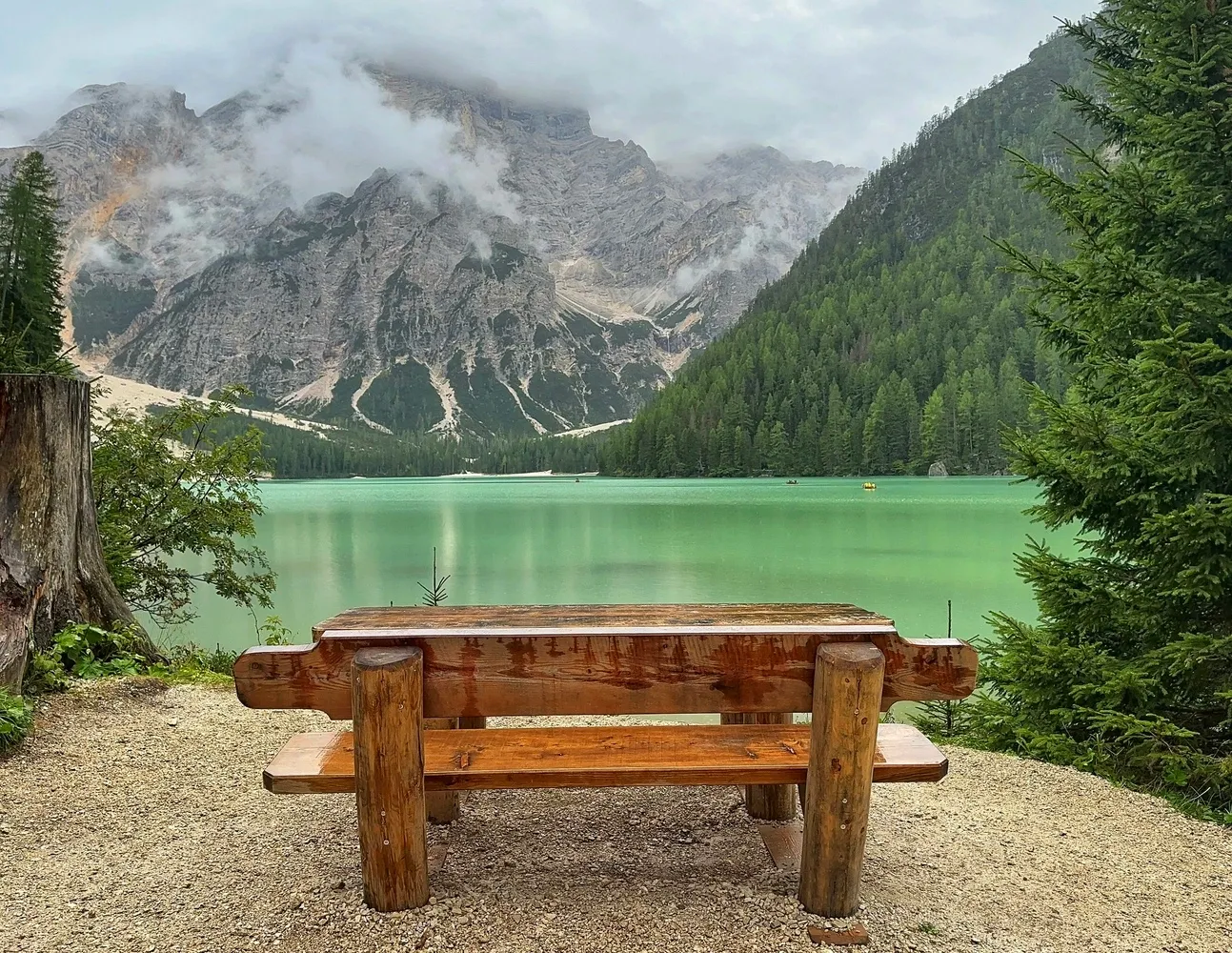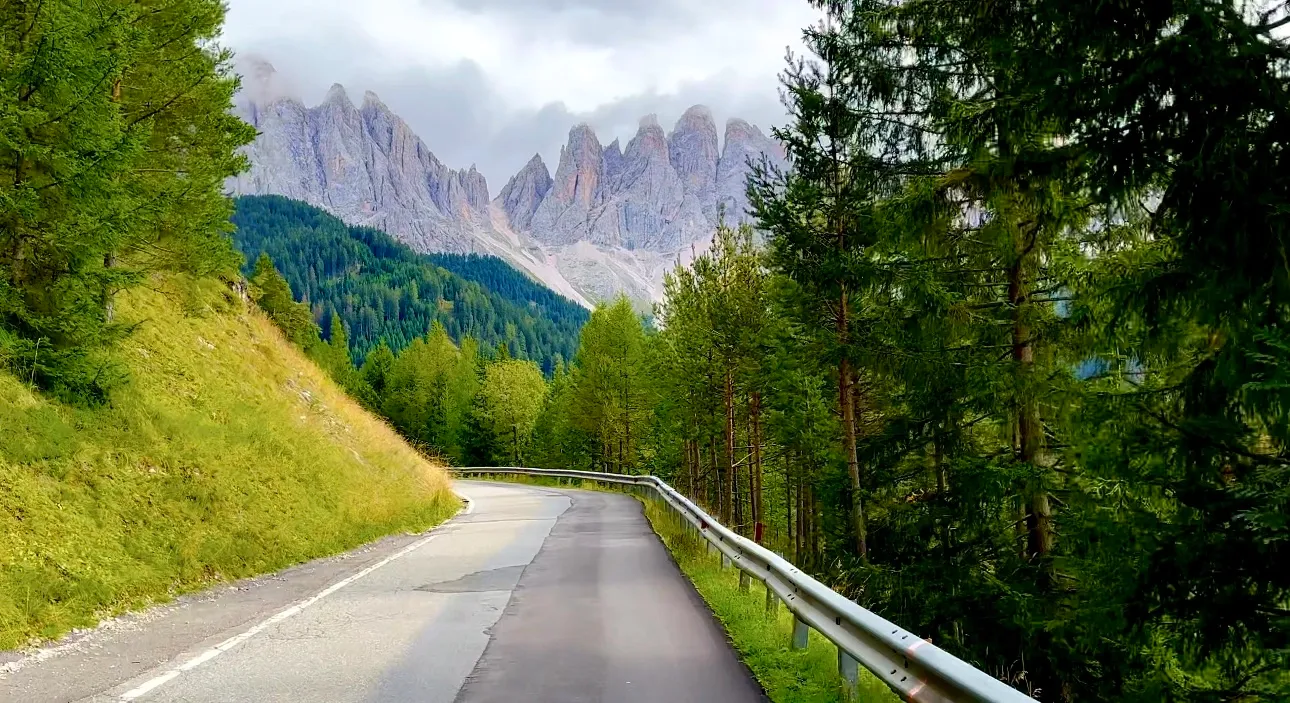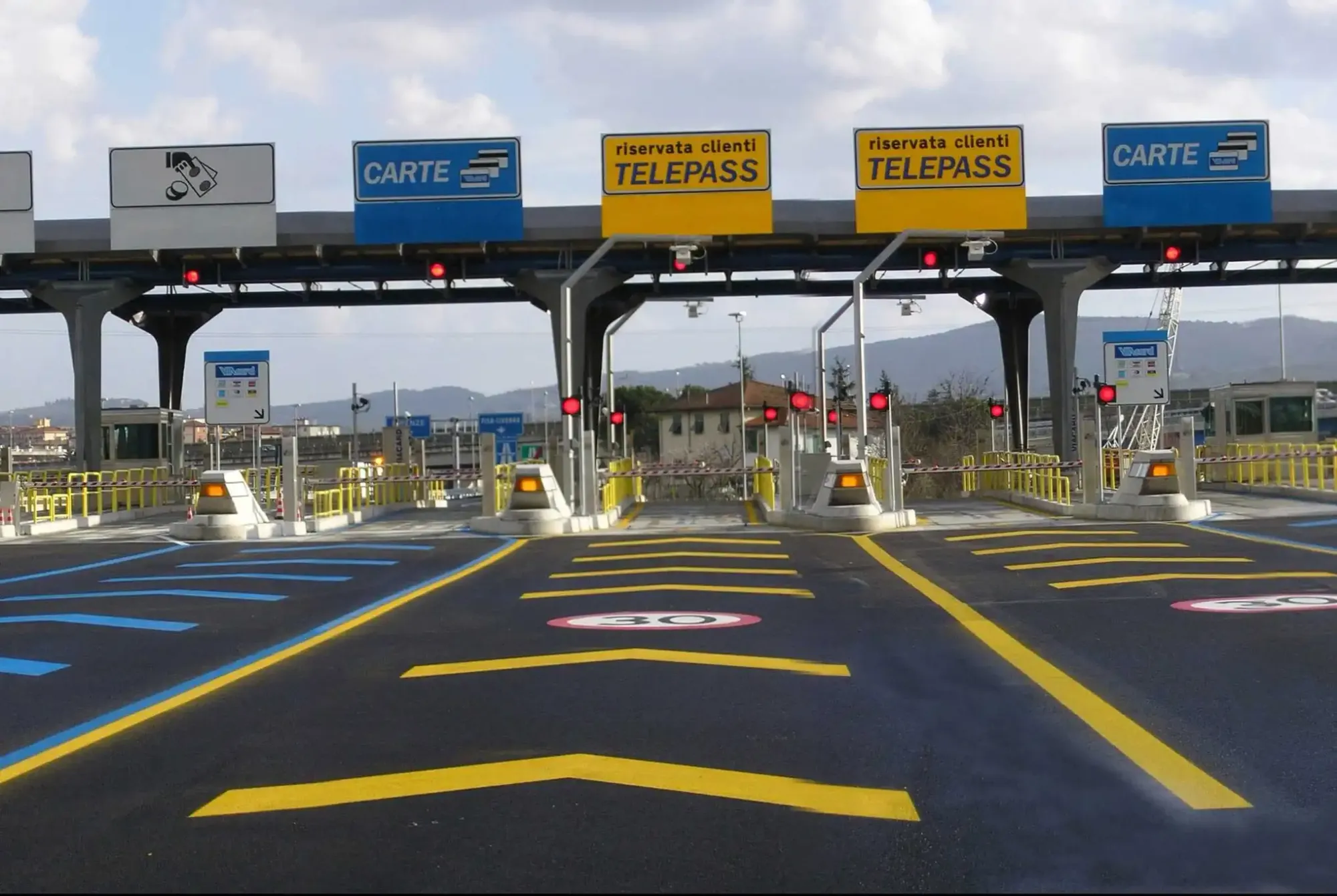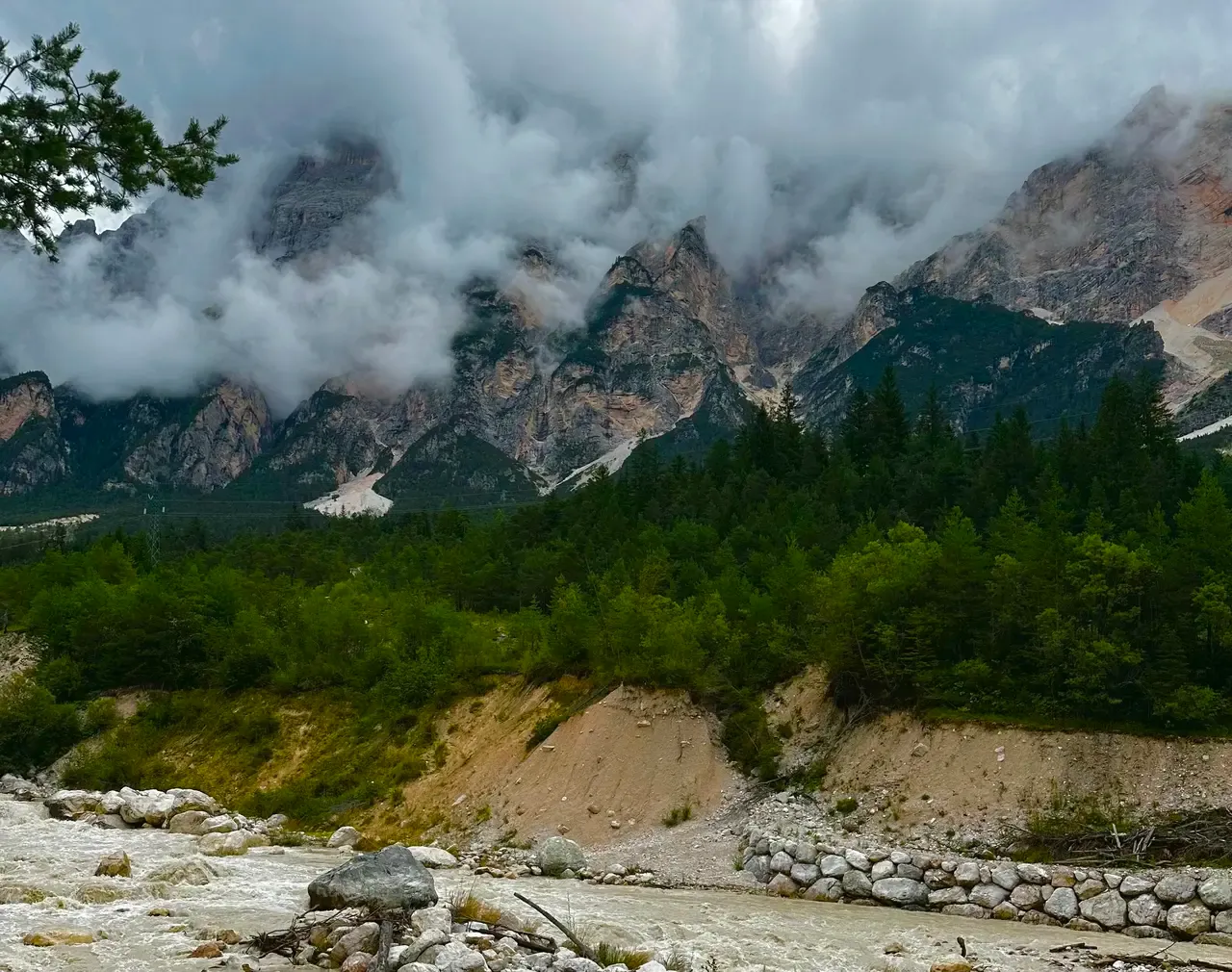Before Setting Off
Independent travel offers true freedom, and everything depends solely on your abilities and willingness to use online maps and descriptions. Of course, it also depends on the company, the fellow travelers – you must accept that for one to two weeks, you will be continuously together with your companions.
Therefore, the main prerequisites for such a step are tolerance, the ability to work in tandem, and, of course, discipline. Traveling with an organized tourist group, you are unlikely to be able to stop every time you see a tempting landscape or a sign pointing to an interesting place. And often, popular tourist routes inadvertently pass by even more beautiful and interesting places than those found in tourist guides.
In stopovers, the time will be limited, and there will often be a less disciplined fellow traveler who loses track of time while entering a roadside souvenir shop, causing all the other group members to wait impatiently.
Of course, this type of travel has its benefits – you will be taken, accommodated, and informed about any museum's founding date and the historical figures who have ever stayed in this or that house.

However, I am more interested in enjoying those places that I have found online and read about beforehand. Conversely, if the history of a place does not particularly interest me, I do not delve into it.
I have traveled abroad independently many times, and with each trip, experience is gained, potential risks are identified, and previous mistakes are acknowledged.
The first few times, embarking on a two-week journey, almost all belongings were taken along. However, with each trip, it becomes clearer what is most necessary for comfortable travel. Thus, I created a list of essential items, from which something is crossed off after each trip.
The world will not end if, on the last day of the trip, there is no clean shirt left in the luggage to wear, as this day will be spent either on the tiring but emotionally filled return journey or on a plane among strangers, not at your workplace's anniversary party.
I suggest not skimping on insurance. A few dozen euros invested in health insurance and additional risks will seem insignificant compared to the amount you would have to pay if you end up in an unforeseen situation. Definitely print out the insurance policy in paper form!
Ensure you have telephone communication capabilities abroad, including the internet. Hotels usually offer free Wi-Fi, but there are also places where the only connection with the outside world is somewhat successful communication with the accommodation staff.
Stop and See...

This region has countless noteworthy places, but I will list those I have visited by car, along with GPS coordinates, which, when entered into a navigation device, will lead to the nearest parking lot for each sight. The indicated fees for the visited places may change; in this description, I will mention the fee as it was in 2023 for one person.
Since Italy is geographically located mainly in mountainous terrain and has a relatively large population – about 60 million on a 301 km² area – finding a free parking space in populated areas is complicated, especially in larger cities or near significant sites.
Parking in Italy
In Italy, parking spaces without road signs are also marked with three types of horizontal road markings: yellow is for local residents with special permits – “riservato ai residenti” and persons with disabilities; white is free – “parcheggio gratuito”, and blue is for a fee – “a pagamento”.
There are also limited-time free parking spaces, where using them, a “Disco orario” – a disc with a “clock” indicating the start time – must be placed behind the car windshield.
It happens that foreign tourists confuse paid parking with short-term free parking, as these road signs are similar. The time limit for free parking is indicated in hours (1 ora – 1 hour, 3 ore – 3 hours, etc.). Paid parking may have a time limit (for example, dalle 8.00 alle 18.00, meaning from 8 am to 6 pm, the rest of the time the car can stay in the parking lot for free).
Attention should also be paid to additional explanatory plaques, as they often indicate a ban on parking at certain times of the day, especially in the morning when the area is being cleaned, or on specific days when a weekly market (mercato) or cleaning work takes place.
Another important note is that in many cities, when entering the historical part, it sometimes happens that you unintentionally pass the “ZTL” road sign – “zona traffico limitato”, and then, upon returning home, an unpleasant “greeting” from the Italian police may await.
When parking the car, I recommend not leaving personal belongings in visible places in the cabin. Unfortunately, Italy is not on the list of safest countries, and unpleasant incidents, especially for tourists, occur here.
You will likely notice many cars with scratched and damaged corners – this is daily life here, as everyone tries to enter and exit narrow parking spaces as best they can, given that most residents choose small-sized vehicles due to narrow streets and limited parking spaces.
Especially popular here are scooters, which everyone uses – students and professors going to lectures, housewives going to the store for flour, and foremen, bosses, and office workers. At an intersection with a red traffic light, you will be “surrounded” by a whole “swarm of wasps” with roaring “Vespas” (vespa – Italian for wasp). Be especially careful, as, contrary to the unwritten rule prevailing here that “the bigger has the right of way,” it is sometimes quite the opposite. Let the buzzing “cloud” disperse, and continue your journey calmly.
Driving in uncontrolled and roundabout intersections requires special attention and caution. Italians drive fast, abruptly, and often recklessly. I have personally experienced a situation where, driving on the main road, a “hothead” suddenly appeared in front of me. Do you need problems and lengthy explanations in a foreign language with the police while on a trip in a foreign country?
A law-abiding tourist can often become a moral victim to an impatient “ragazzo” (ragazzo – boy, guy, lad) behind them, who just can’t tolerate that you are driving in front of him in a populated area, adhering to the maximum speed limit. Your attention will be drawn by nervous, periodic honking, but in such a case, the best reaction is to ignore it and continue your journey peacefully.
Pedestrians on crosswalks are also not very respected here – you almost have to raise your hand to stop the stream of cars and cross the street.
This road sign indicates that this is a free parking space for a limited time (1 hour), using a parking time disk, which must be placed visibly behind the car windshield, showing the arrival time (ora di arrivo).
This road sign indicates that from Monday to Friday, from 9:00 PM to 4:00 AM, parking is prohibited due to area cleaning.
A restricted traffic zone, where only those with special permits are allowed to enter. Sometimes such permits are issued by the accommodation or other establishment you are visiting.
Paid parking with indicated operating hours and hourly rates, as well as the maximum parking time (2 hours).
Seeing such a road sign, it is not difficult to understand when parking is free and when it is prohibited.
This parking space is reserved for you if you are a guest of the hotel or restaurant. Upon arrival, make sure to inquire about safely leaving your car in such a parking lot.
It indicates that in a certain road section, there are temporarily no horizontal road markings (they may soon be applied), and the driver should be guided by the width of the roadway and the situation on the road.
Maximum Speed Limits in Some European Countries
Drive or Fly?
Preparation for the trip is individual for everyone. Some plan and prepare for a trip a year in advance, while others decide almost the night before and set off early in the morning. I am in favor of careful planning.
I have always doubted whether it is more advantageous to go on a long trip by car from home or to fly and rent a car at the destination airport. In this case, there are several “pluses” – a lot of days (depending on your start point) of travel are saved, and along with that, energy.
Financially, there is no significant difference – it all depends on how many companions you plan to take along, how confident you are in the technical condition of your car, and how cheap or expensive airline tickets you manage to find and purchase.
There are regular flights to Milan Malpensa Airport (MXP) and Milan Bergamo Airport Orio al Serio (BGY). It is recommended to dedicate one afternoon to visit the upper old town of Bergamo Città Alta.
There are also flights to Verona Airport (VRN), which is closer to Lake Garda. Then there is the possibility to choose Venice Airport (VCE) and Treviso Airport (TSF), which are located near Venice, but during our travel research, these flights were not in the low-cost category.
Traveling by plane has luggage and carry-on restrictions, but it eliminates the tiring journey through France, Switzerland, Austria and Slovenia.
Keep in mind that entering these countries, you need to buy a road usage vignette at the border or the nearest gas station or simply on the internet. It costs over €10, depending on the country and number of days you plan to spend in the country.
There are cameras placed on the roads that will record whether you have paid the toll or not. Failing to buy one results in a hefty fine.
Besides having a vignette in some of these countries, there are also road sections – tunnels and panoramic roads – for which you have to pay extra.
In Italy, a vignette is not required, but on major highways, there are toll points where you take a ticket and pay it at a machine when exiting the highway, which calculates the total distance traveled. You can pay in cash or with a card; you can also use all your accumulated small change – the machine will count it honestly and give you change, then the barrier will open, and a woman's voice will say “Arrivederci!” (goodbye!). The toll fee is an average of €10 per 100 km.
Additionally, there are specific tolls for certain tunnels, such as:
- Mont Blanc Tunnel: €55 for a passenger car
- Great St. Bernard Tunnel: €31 for a passenger car
- Brenner Pass: €11 for a passenger car
You can see more detailed information about toll roads in Europe, as well as the price of fuel here https://www.tolls.eu

If you can afford to spend more time on the road, there is always the option to avoid toll roads and find an alternative. However, then you have to consider numerous intersections and traffic jams, but this way, you can better enjoy the views for which you have come to this wonderful land.
When planning the distance and duration of the route, I use “Google maps”. From experience, I can say that the travel time should be multiplied by at least 1.2 x; however, if it goes through cities or is longer than a couple of hours and you plan to take coffee breaks, then by 1.5, because “Google” cannot predict traffic jams or coffee breaks on the road and stops at bends with breathtaking views.
If you have decided to rent a car at the airport, I recommend booking it in advance, similar to booking accommodation. Keep in mind that rental points require you to have a credit card (not a debit card) – carta di credito, and there should be several hundred or even around a thousand euros available on it, which the rental company will “freeze” as collateral for the car and return it to your credit card a few days after the trip ends, provided you have not “caused any trouble” with speeding or other violations, and if you return the car exactly as you took it.
Before returning the car, several companies require filling the fuel tank within a 10 km radius (you need to show the receipt – scontrino, ricevuta), as the car was also given to you “fully fueled”. Car rental can be more expensive if you want to specify a second driver (your companion) or if you want to cross the state border. If you sign up for only one driver, never let anyone else drive the rental car!
If You Are Ready to Set Off

I have divided the further travel descriptions into several parts, trying to arrange the sights as conveniently as possible. However, feel free to arrange them according to your route and wish list. The indicated time to spend at each place is only approximate, and you can safely reserve more – it will be much better if you have extra free time than if you are late.
Free time can always be used for rest, reviewing the further travel plan, lunch, or a coffee break. Always keep in mind that unexpected delays can occur on the road – traffic jams, road repairs, a shop visit, or something else.
When booking accommodation, carefully check the arrival time – it happens that a hotel may charge an extra fee if you arrive later than the specified time. Find out if the accommodation has its free parking, as it will not be convenient to leave the car on the other side of the town and walk to the hotel with suitcases. Also, check if breakfast is included in the room price. If it says “continental breakfast,” it will most likely only include a glass of juice, coffee, and a croissant.
However, sometimes it happens that breakfast is enough to last until the afternoon. Read other guests' reviews and ratings. Do not draw conclusions based on just one comment, as it might simply be that someone was unlucky with a broken shower faucet or squeaky doors in the room, while most other guests may be thrilled with the same accommodation, its beautiful location, and the friendly hosts.
Websites that offer accommodation reservations usually provide a guest rating for each of them. If it is higher than 8.5, then the place is safe to stay overnight without ruining the next day. You can communicate with each hotel by writing an email.
Although most Italians living in small villages do not speak English, feel free to write in English – the person on the other end will likely be able to translate your wishes and questions.
Do not be surprised if, upon arriving at an accommodation in Italy, all your fellow travelers' passports are taken to register. You can be sure that they will be returned to you shortly without any ill intent – this is the procedure here.
While in other European countries like Austria and Germany, we have experienced that passports are not asked for in hotels and other stays. They only ask for the guest's name or surname and give the room keys. Elsewhere, there is even a level of trust that surprises us, while in other places, there is compliance with laws limiting illegal immigration.
In a remote Swiss village, we encountered a situation where an envelope with my name on it was left on the reception desk, containing a check for the already completed hotel payment, a parking card, and the room keys.
Elsewhere, you might find that the hotel does not have a reception at all – you will receive a code on your phone for a mailbox containing your room access card, or simply a door code. When leaving, just drop the access card back into the box and continue your journey. Money for the overnight stay will be automatically deducted from your account if you have provided your credit card details on the reservation site.
For reservations, I use the website booking.com and Airbnb. I think it is safe and user-friendly. However, for security purposes, I have created a separate payment card that I use only for hotel reservations. You do not need to be a financial specialist to understand that there is no shortage of financial and credit card fraudsters today.
Vorrei un caffè
Everyone in Italy drinks coffee, always and everywhere. This favorite beverage is an essential part of every Italian's day. I will briefly tell you about some of the many types of coffee so that you can also enjoy this invigorating drink during your trip. Coffee in Italy cannot be tasteless, weak, or improperly served. Its preparation is special, and even in the simplest roadside bar, the hot drink you order will be excellent and usually costs only 1 – 1.5 €.
By the way, il bar – bar in Italy is a cafe where you can also eat, and this place is not at all what we usually associate with the word “bar”. People go to bars in the morning before work to leisurely “connect” to the day, sit and enjoy their morning coffee, chat with neighbors, and even bring their children.
Foreign tourists are used to calling Italian coffee “espresso,” but if you want a small, strong drink in a miniature cup, you should simply ask for coffee – un caffè. Italians will understand that you want exactly “espresso.”
Do not be surprised if it is served with a glass of water in a cafe – this is part of the coffee drinking ritual. Before enjoying the coffee, take a sip of water, and after finishing the cup, rinse the strong taste with the glass of water.
If you want to “stretch” this strong coffee a bit longer, you can ask for caffè lungo – “long coffee.” The cup will be slightly larger and not as strong, but enough to chase away sleep or fatigue from the journey.
However, if you want a normal coffee – like the one you are used to drinking at home – you should ask for caffè americano. Yes, yes, the “American” coffee will be of normal strength and served in a normal-sized cup. If you do not see sugar nearby, feel free to ask the bartender lo zucchero!
If you are used to drinking coffee with a little splash of milk, you will need caffè macchiato, which translates as “stained” – coffee with a splash of milk.
I would not recommend asking the bartender for “latte,” as we are used to doing at our gas stations. Then you will receive only a glass of milk. Yes, yes! Latte translates as milk. If you want a light coffee diluted in a glass of warm, frothed milk with a layer of foam on top, ask for caffè latte – coffee with milk. Or, cappuccino – here there will be a little less milk, but on top, you will find a layer of ground chocolate.
On the other hand, if you have parked the car until at least the next morning and want a cup of coffee with a splash of strong alcohol, you can ask for caffè corretto.
In addition to the listed types of coffee, you will find several others on the menus, but that is a topic for another discussion.
Let's go on part 2 of our trip through the beautiful Dolomites, which are included in the UNESCO World Heritage List.
Buon viaggio – Have a good trip!
Thank you for reading and make sure to subscribe. We're constantly exploring new destinations and share our stories, tips, and the beauty we discover along the way.



